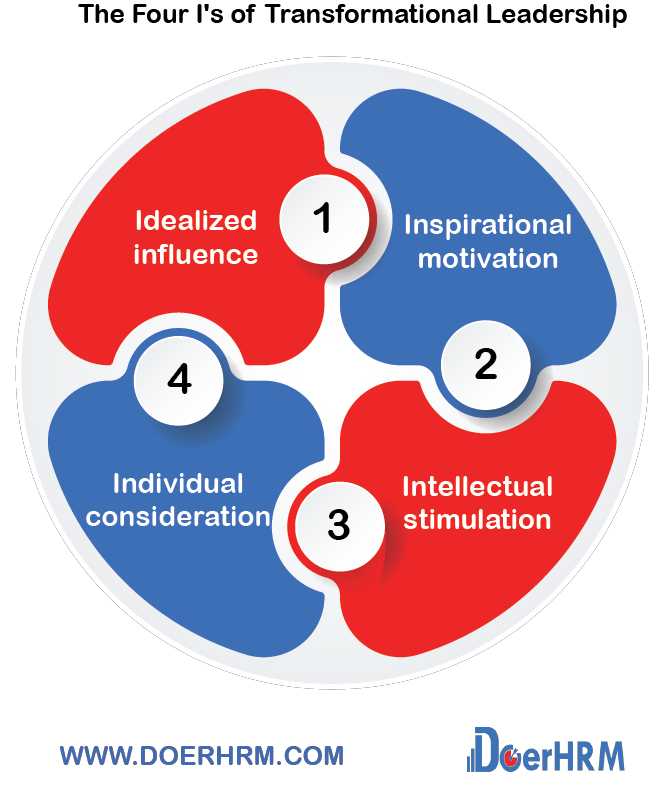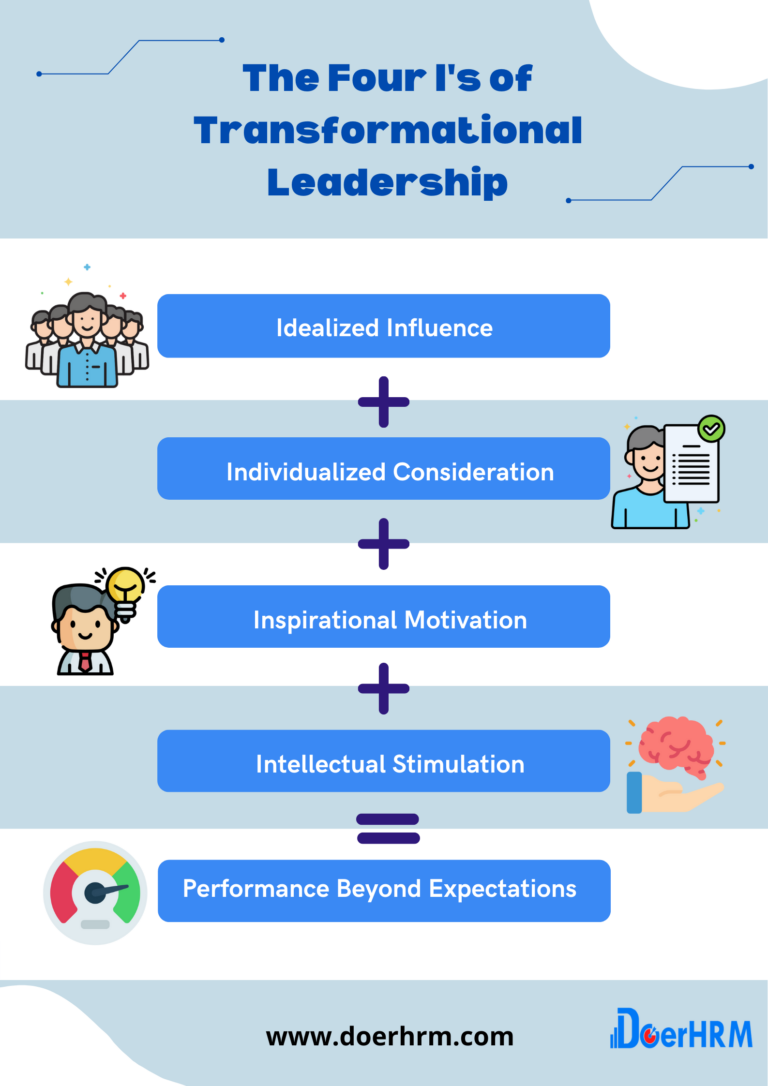Leadership is the job that every manager has to do at work. Managers often make the mistake of thinking that because they are managers, they are also leaders and that their employees will automatically follow them.
In reality, a position just means a title, not that someone is in charge. To be a good leader, a manager must have a positive effect on his or her team so that the organization’s goals can be met. Managers can become great leaders with the help of a transformational leadership approach.
The Four I's of Transformational Leadership
Transformational leadership, which is also called the “four I’s,” is made up of four parts: idealised influence, inspirational motivation, intellectual stimulation, and individual consideration. Each factor will be discussed below so that leaders can use this method at their workplace.

Idealized influence
A term for leaders who are great examples for their employees. The people who work for them trust and respect leaders with idealised influence to make good decisions for the organisation.
Transformational leaders have the most idealised influence when they are willing to take risks and act based on a core set of values, convictions, and ethical principles. This idea of idealised influence is how the leader gains the trust of his employees, and how the employees gain confidence in their leader.
Inspirational motivation
A term for leaders on how they get their employees to work toward the organization’s vision. Leaders who can inspire and motivate their teams help the organisation reach its goals of making more money and growing its market.
The transformational leader must have a clear picture of the future, let the group know what is expected of them, and show that they are committed to the goals that have been set. For this part of transformational leadership, the leader must have great communication skills because he or she must say what they want to say clearly, forcefully, and with a sense of authority. Other important things a leader does are stay positive, be enthusiastic, and be able to see the good in things.
Intellectual stimulation
A term used to describe leaders who encourage new ideas and creativity by making people question their usual beliefs or points of view. Leaders who are intellectually stimulated encourage critical thinking and problem solving to improve the organisation.
Transformational leadership encourages followers to be creative and take care of themselves. The leader helps his employees by including them in the decision-making process and encouraging them to find solutions by being as creative and innovative as possible. To do this, a transformational leader questions what employee think they know and asks for their ideas without criticising. They help employees change how they think about and talk about problems and problems. The leader’s vision helps those employees see the big picture and succeed in what they do.
Individual consideration
A term for leaders who coach and give advice to their employees. Leaders who care about each employee encourage them to reach goals that help both the employee and the company.
Each employee or member of a group has their own needs and wants. Some employees are driven by money, while others are driven by excitement and change. The part of transformational leadership that takes each employee’s needs into account is aware of these things. The leader must be able to figure out what drives each employee by listening in on conversations or watching what they do.
Through coaching and mentoring one-on-one, the transformational leader gives each team member the chance to have training sessions that are tailored to their needs. Through these activities, team members can learn and grow in their jobs.
Each of the four parts talks about qualities that help the “transformation” process go smoothly. When managers are good role models, encouragers, innovators, and coaches, they are using the “four I’s” to help “transform” their employees into better, more productive, and successful people. Because of this, the transformational approach can be very helpful for managers to use at work.

Transformational Leadership in Action
Transformational leadership involves a lot of different parts of leadership, so there are no specific steps a manager should take. Becoming a good transformational leader is a process that goes back and forth. This means that if you want to have a transformational style, you have to work at it. A manager can use this method more effectively if they know the basics of transformational leadership and the four Is.
Transformational leadership is an important part of being a good manager, because the success of an organisation depends on how good its leaders are. Managers can be good leaders in the business world if they understand the transformational leadership approach and combine it with the four Is. Using this method, both the manager and the employees are changed to help each person do their job better and the organisation as a whole be more productive and successful.






